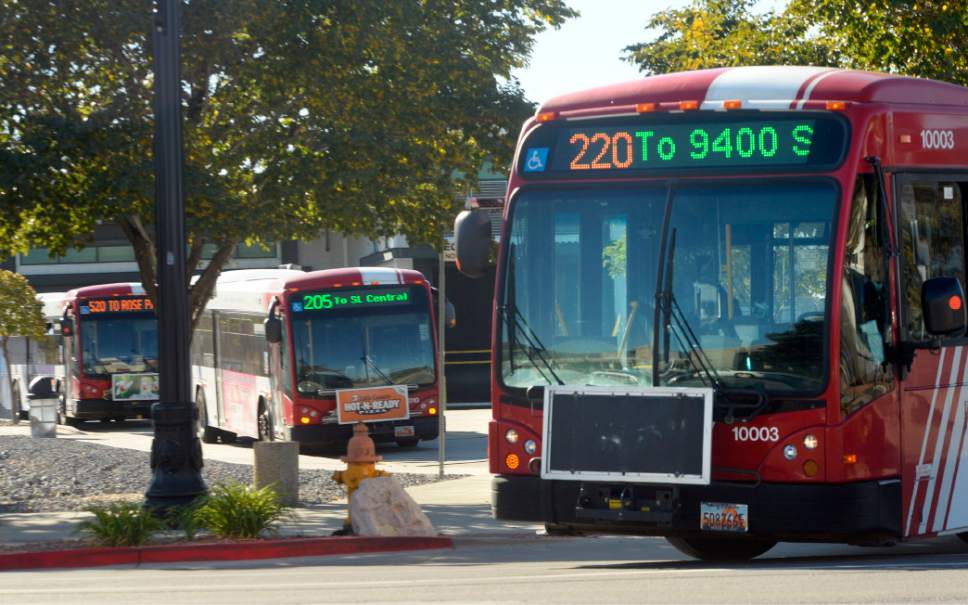This is an archived article that was published on sltrib.com in 2016, and information in the article may be outdated. It is provided only for personal research purposes and may not be reprinted.
A controversial transit project in Provo and Orem has been attacked not only for its $190 million price tag and possibly creating congestion for other cars, but for uprooting hundreds of local trees.
"It's easy to grab headlines while we're losing several hundred trees, because that's pretty dramatic," Provo Mayor John Curtis said Thursday.
So he held a media event to point out that the new "bus rapid transit" (BRT) project will plant four times as many trees as it removes. "It's leaving some very good things in its wake."
Curtis says the project — which creates bus-only lanes for half of its 10.5 mile route — will remove 286 trees, including some that date back to pioneer times. But it will plant 1,017 new ones.
The city placed more than 800 pinwheels in the lawn at the city library Thursday to show how many extra trees that is.
Curtis said while many of the new trees will be small at first, "Several years from now as those trees mature, we're in for a threefold to fourfold better situation with trees than we were before the project."
He said many of the trees that will be removed are not healthy.
"They were planted in road base [poor soil] along University Avenue decades ago and are starting to reach the end of their natural lives."
But Curtis conceded that some historic and healthy trees will be removed.
He said the city is working with Brigham Young University arborists to help ensure that one popular pioneer-era tree lives on, by cloning it and placing its progeny around the valley. "That tree is to live on in many different places," he said.
The mayor said the city also plans to take the wood from that tree to make something useful — such as perhaps a park bench near its current site. "We will make sure the wood from that tree will be used for something that lives on as well."
The BRT project is under construction, but citizen groups have sued seeking to force a voter referendum that could halt it.
The Utah Transit Authority describes BRT as "TRAX on rubber wheels," where passengers must buy tickets in advance.
Extra-long buses would have bus-only lanes for half their route, and may receive priority at traffic signals. They would come about every six minutes at peak times.
The route would include Utah Valley University, University Mall, BYU, downtown Provo and the Provo Towne Centre mall.
Opponents say the project is too expensive, will not be well used and will constrict traffic. Officials say it will reduce congestion and air pollution.



